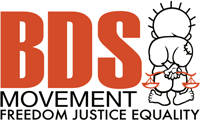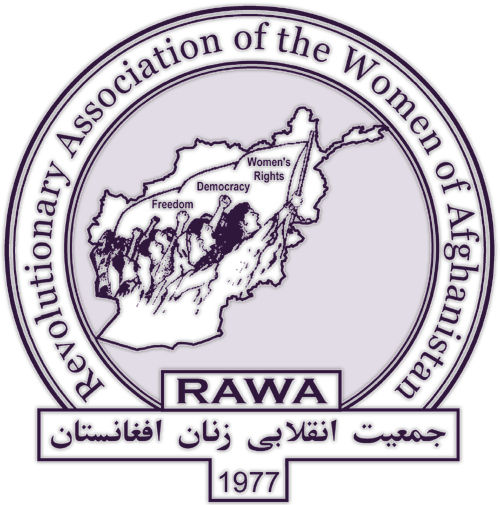WW4 Report
More West Bank clashes as Gaza assault goes on
Mourners clashed with Israeli troops at two funerals Nov. 21 as Palestinians across the West Bank continued to protest the Israeli assault on Gaza. In Hebron, hundreds attended the funeral for Hamdi Mohammad Jawwad al-Falah, shot by Israeli troops at a protest in the city's Bir al-Mahjar neighborhood. After the burial, hundreds of young men began marching towards a Jewish settlement, to be set upon by Israeli forces with tear gas and rubber bullets. In Ramallah, thousands attended the funeral for Rushdi Tamimi, a police officer who died Nov. 19, two days after he was shot by Israeli forces at a protest in Nabi Saleh. A video of that protest shows Israeli forces threatening demonstrators who tried to administer first aid. At Nabi Saleh, where he was buried. mourners chanted "Martyr, rest, we will pick up the fight." After the procession, masked youths hurled rocks at Israeli soldiers lined up at the village entrance, who again responded with tear-gas and rubber bullets.
Iraq exports Islamist militants to Syria?
The main Islamist rebel groups in Aleppo on Nov. 19 rejected the newly formed Syrian opposition bloc, saying they want an Islamic state. "We, the fighting squads of Aleppo city and province, unanimously reject the conspiratorial project called the National Coalition and announce our consensus to establish an Islamic state" in Syria, a spokesman announced in an Internet video. "We reject any external coalitions or councils imposed on us at home from any party whatsoever." The unidentified speaker, sitting at the head of a long table with some 30 other men and a black Islamist flag on the wall, named 14 armed groups as signatories to the statement, including al-Nusra Front, Ahrar al-Sham and Liwa al-Tawhid. Ahrar al-Sham rejected the proclamation on its official webpage, however, saying that its leadership did not endorse the statement.
'Occupy the Farm' evicted in East Bay
A UC Berkeley research field in the adjoining municipality of Albany that had been planted with winter greens in October by Occupy activists was ploughed under at the order of university authorities Nov. 16. The field, known as the Gill Tract, was occupied on Earth Day, April 22, and dubbed by activists "Occupy the Farm," with a vision of developing it as a community agro-ecology project. Crops planted then were similarly destroyed by UC, and nine arrested in a May 14 raid by UC police. But activists re-took the site in October, holding a punpkin-carving festival and planting the new crops. UC issued a letter upon razing the crops to the Albany city council calling the occupation a "threat to academic freedom." The contrasts a more conciliatory open letter issued in May pledging open "debate and dialogue" about the future of the site. In recent years, the field has largely been off-limits to the public, though local activist groups have repeatedly asked the university to open up the space to community residents. (Berkeley Patch, Nov. 18; Berkeleyside, Nov. 16; UC Berkeley News Center, May 18; Berkeleyside, May 14; IndyBay, April 24)
Treasury Department sanctions Taliban 'kingpin'
The US Treasury Department sanctioned a senior Taliban official on Nov. 15 for his alleged role in the Afghan opium trade, saying the traffic is used to finance insurgent activities. Mullah Naim Barich, who operates as Taliban "shadow governor" in Helmand province, is named in the action, which freezes any of Barich's assets held under US jurisdiction and bars anyone in the United States from conducting any financial or commercial transactions with him. "Today's action exposes the direct involvement of senior Taliban leadership in the production, manufacturing, and trafficking of narcotics in Afghanistan and underlines the Taliban's reliance on the drug trade to finance their acts of terror and violence," David Cohen, Treasury under-secretary for terrorism and financial intelligence, said in a statement.
China: changing of the guard —amid same old repression
As expected, Xi Jinping was chosen as general secretary of the Chinese Communist Party at the 18th Party Congress in Beijing's Great Hall of the People Nov. 15. The process, concealed from domestic and international observers, was thoroughly choreographed; Xi, the incoming president, and Li Keqiang, the new premier, were probably chosen years ago. The 2,270 delegates also named the new Central Committee, a ruling council of some 200 full members and 170 non-voting alternates. The leadership change happens every 10 years. The congress had an official theme of "Accelerating the Transformation of the Economic Growth Model," with the official report opening: "We need to expedite the improvement of the socialist market economic system." The target of doubling gross domestic product growth by 2020, set during the 16th congress, was raised to doubling both GDP and per capita income. Xi's remarks called for addressing "corruption" and "inequality," but made no mention of Marxism or Mao Zedong Thought. (China Digital Times, Xinhua, BBC World Service, Nov. 15; Caixin, IOL, BBC News, Nov. 14; Worldpress, Nov. 6)
Kenya: cattle rustlers bring war to Rift Valley
Hundreds of people have fled as Kenya mobilized military forces to hunt for cattle rusters after the bandits killed over 30 local police officers in Samburu district, Rift Valley province. (See map). Members of the Turkana people near Baragoi town have fled into the bush fearing reprisals after a heavily armed gang that stole cattle from the rival Samburu tribe launched an ambush against a police patrol over the weekend, using machine guns and rocket-propelled grenades—described as the worst attack on police in Kenya's history. Villagers started fleeing after trucks arrived with hundreds of troops from the Kenya Defence Forces, backing up paramilitary and regular police forces. The military issued a blunt warning ahead of the deployment, saying cattle raiders should be prepared "to die because it is easy for the government to compensate their loss of life." The Kenyan Human Rights Commission's Samuel Tororei condemned the remarks, saying: "The police should have issued a warning, urging the rustlers to stop their criminal acts, but threatening them with death is against human rights principles." (DW, Reuters, Capital FM, Nairobi, Nov. 14)
Joint strike actions across Europe
A "European Day of Action and Solidarity against Austerity" on Nov. 14 marked the first time strike action has been held simultaneously across four countries. General strikes were held in Spain and Portugal, with widespread stoppages Greece and Italy. Large solidarity demonstrations were held in several other countries, including France and Germany. In total, 40 trade union organisations from 23 countries were involved in the mobilization. In Spain, the General Workers Union (UGT) and the Union Confederation of Worker Commissions (CCOO) claimed 70% compliance with the strike. After nightfall, violence exploded in Madrid, as police fired rubber bullets to disperse protestors. Strikers erected barricades on several streets, and garbage bins were set on fire, filling the downtown area with smoke. Street clashes were also reported from Lisbo; more than 100 were injured and some 140 arrested across both cities. Brussels also saw violence, after eggs were thrown at the Geman embassy. The continent-wide day of strikes and solidarity was organised by the European Trade Unions Congress (ETUC). (Europa Press, Europa Press, Euronews, Euronews, Euronews, Nov. 14)
Israel launches new assault on Gaza
Israel's armed forces launched multiple air-strikes across the Gaza Strip Nov. 14, after killing Ahmad al-Jaabari, the head of Hamas' military wing the Qassam Brigades, in a missile strike on his vehicle in Gaza City. Palestinian officials said at least six people have been killed in the airstrikes, including a 7-year-old child in the Zeitun neighborhood of Gaza City, and an infant in home in the city's Shujaiyya neighborhood. Medics identified two of the casualties as Hamas fighters. Another 50 are reported injured. The strikes were aimed at Hamas police and security forces headquarters across the Strip. "We recommend that no Hamas operatives, whether low level or senior leaders, show their faces above ground in the days ahead," the Israel Defense Forces said in a Twitter message.















Recent Updates
10 hours 17 min ago
10 hours 42 min ago
1 day 10 hours ago
1 day 10 hours ago
1 day 10 hours ago
2 days 13 hours ago
2 days 18 hours ago
3 days 9 hours ago
3 days 9 hours ago
3 days 17 hours ago